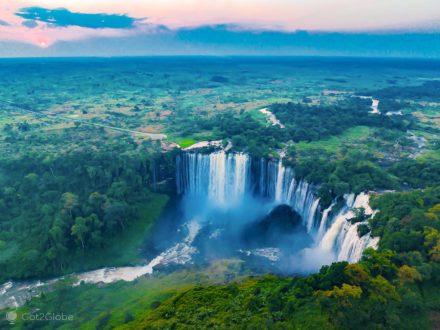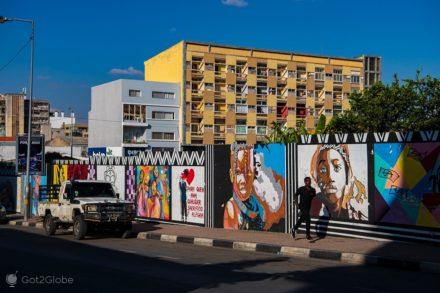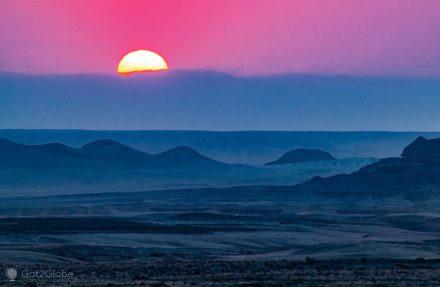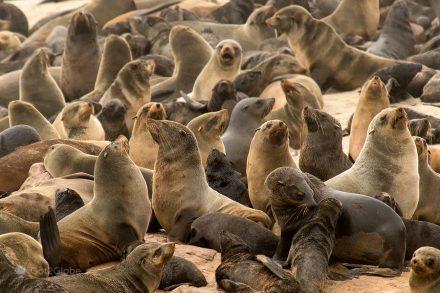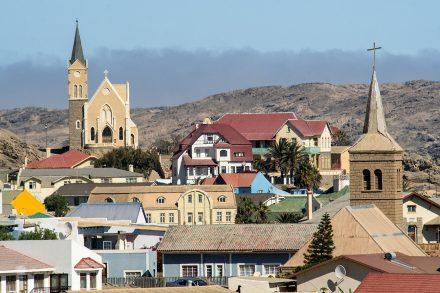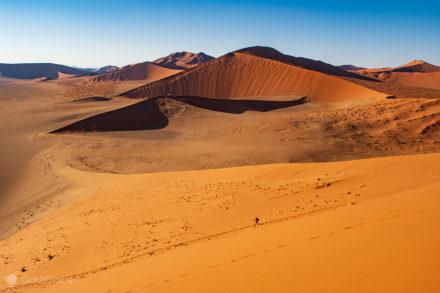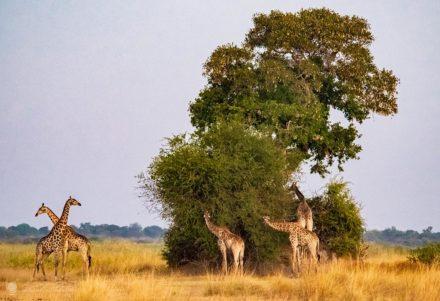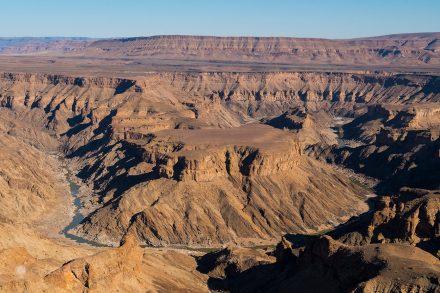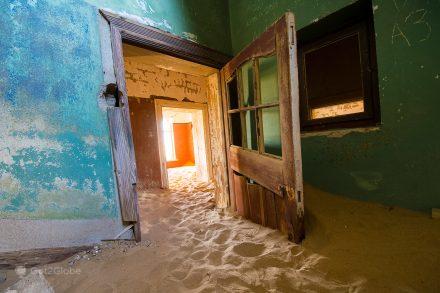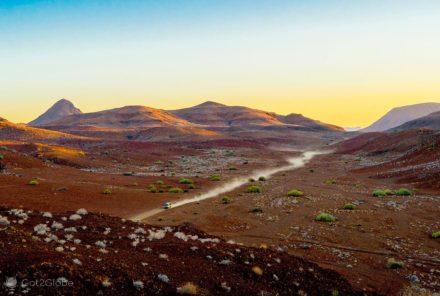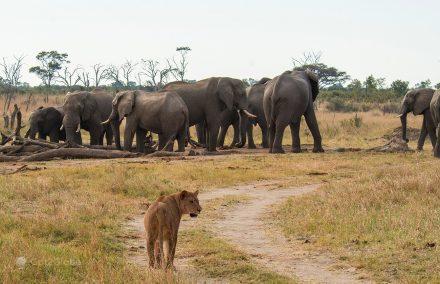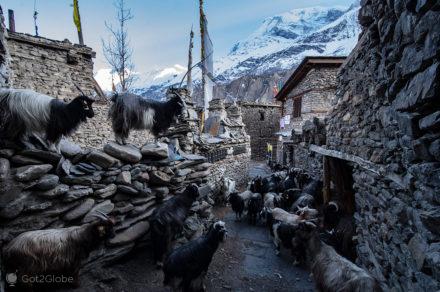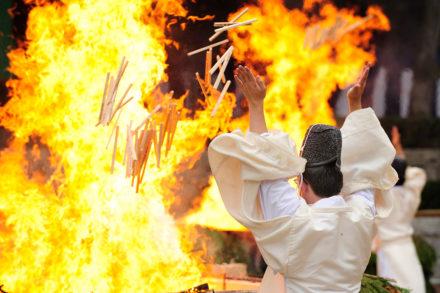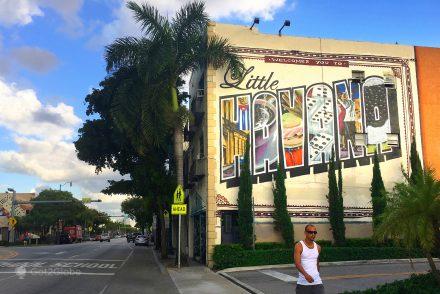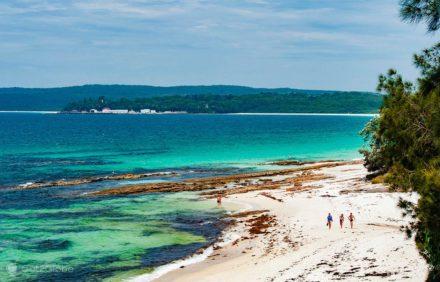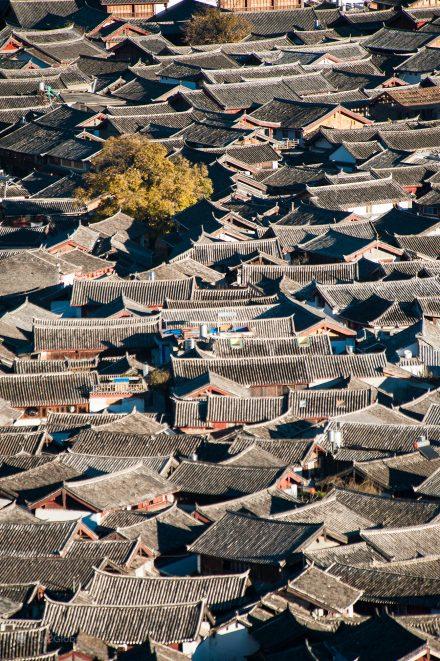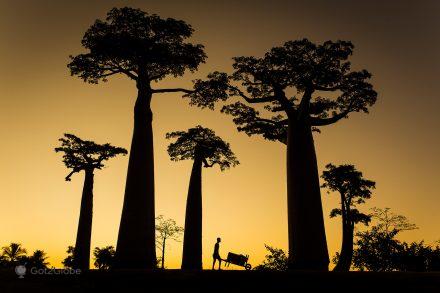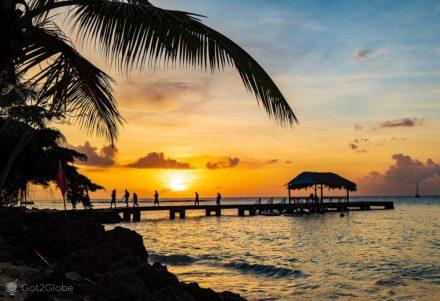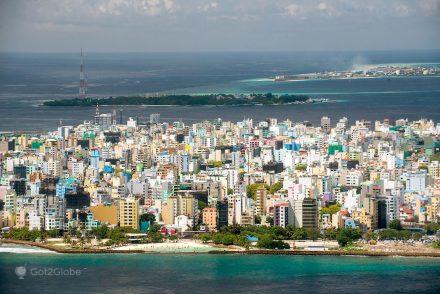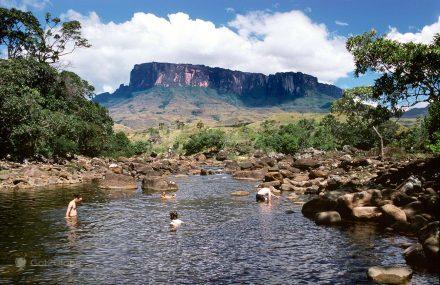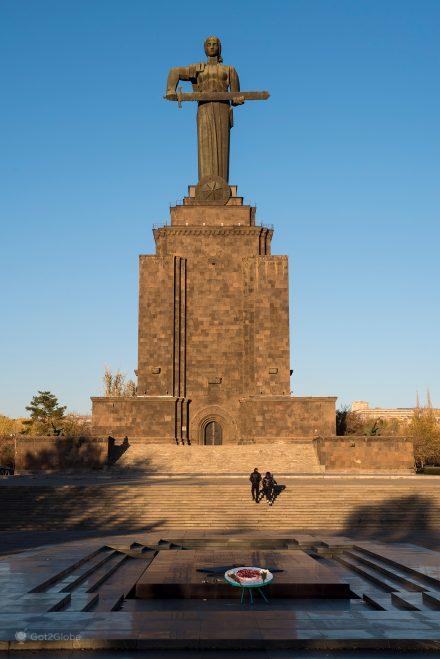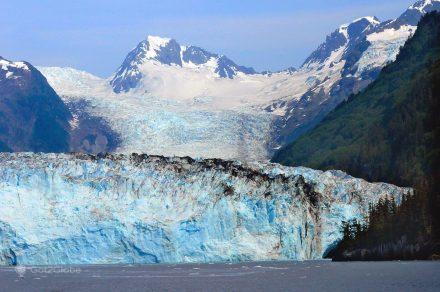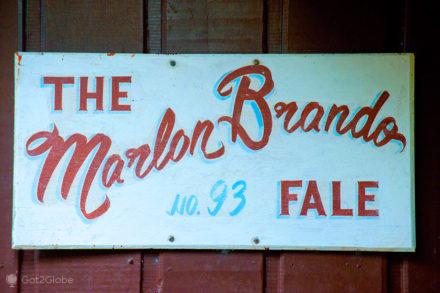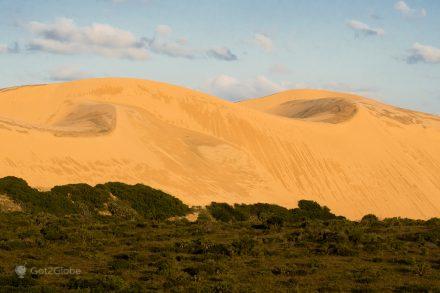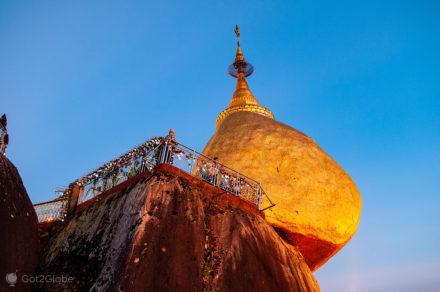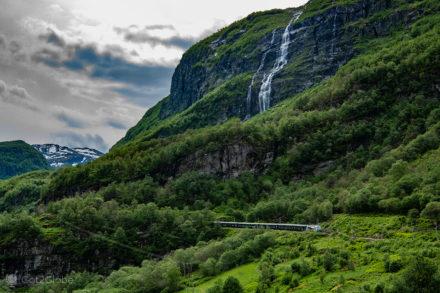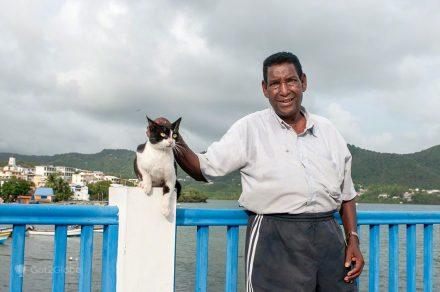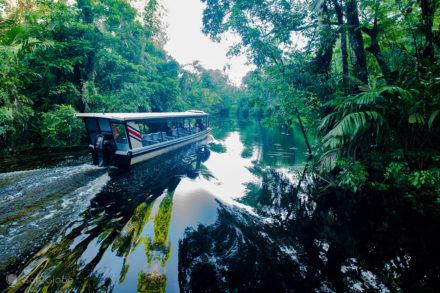After passing the neighboring cove of Sangano, the coastline twists again.
It enters the ocean and forces us to follow in its wake. The EN100 route, which runs along the Angolan coast, continues its path. It leads us to a detour of poorly packed and irregular dirt. Some bumps do little or nothing to devalue the stunning panorama it reveals to us.
There, the relief ridge that blocked the view of the ocean opens onto a river valley with rounded, green slopes.
The vegetation that covers and sprinkles it matches that which accompanied us for much of the route: a savannah that the humidity from recent rains keeps lush, from which proud moxix trees emerge.
The turnoff goes into an adult meadow. The sting almost passes.
After passing a few hairpin bends, a fork in the road forces us to decide. To the right, the continuation of the meanders that led to the bottom of the valley and the seafront.
To the left, others, promised us the conquest of the promontory that closed the valley to the south and different perspectives of the view that enchanted us.
Cabo Ledo, Angola: Conquering the Heights of the Promontory
A parking area dictates the end of the route. It was permanently inhabited by the relic of an old beetle painted in a psychedelic style that served as a vase and flowerbed for an ornamental forest.
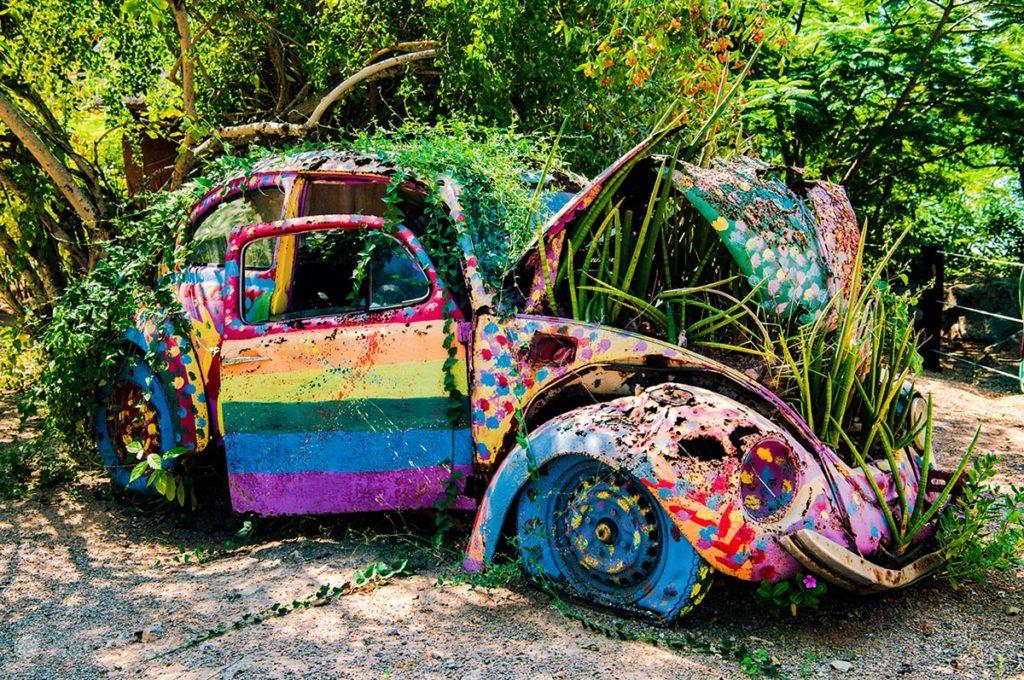
We continued on foot, along bungalows perched on the slope, part of a Carpe Diem Surf Camp.
The privileged balcony of one of them once again reveals the valley to us, this time from a side position.
Below, a stream, diminished by the entrance in the dry season, lay just short of the calm sea, almost shallow.
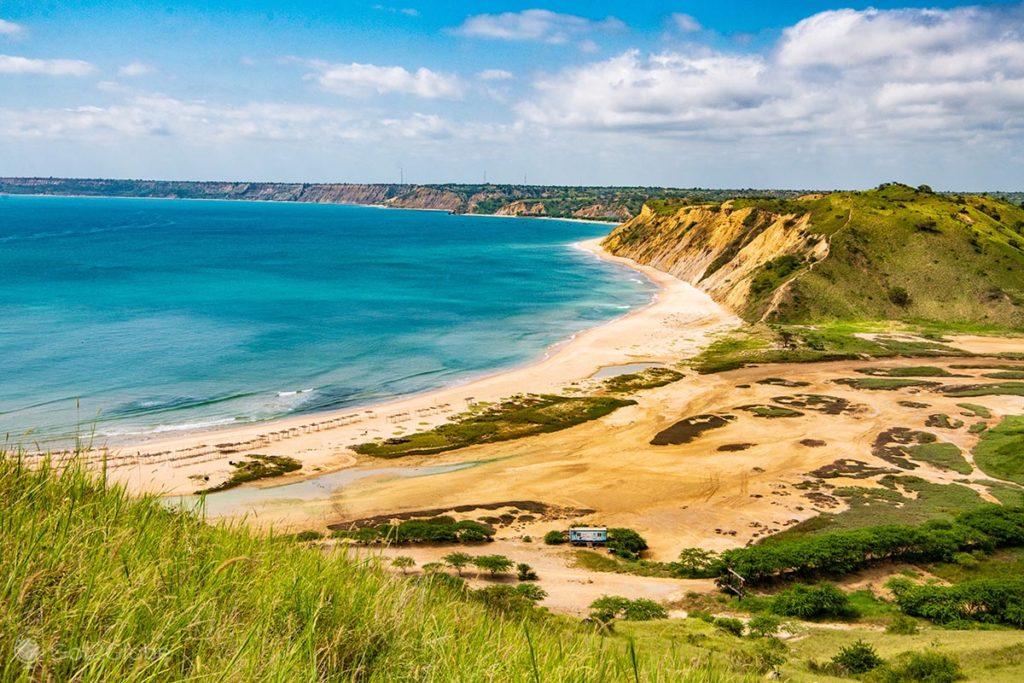
It flowed into a lagoon retained by the sand.
Ahead, the opposite slope rose, with abrupt cliffs, furrowed by the rain, which rested on a sandy beach granted by low tide and, as such, ephemeral.
The immensity of this slope only allowed a glimpse of what would be the continuation of the large cove and the permanent sand beyond what was named Praia dos Surfistas.
It was another area that we were hoping to explore.
We ascend something more. At that time, we confirmed that what we were exploring was Cabo Ledo, which was so clearly visible on the map.
We had almost reached the top and end of the promontory, when the slope revealed to us another cove facing south, lined with compact and thorny bushes that discouraged us from wandering there.
A Domain of Haughty Moxixeiros
We challenge them a little.
Enough for us to get involved in a colony of moxixeiros, the first we had lived with so closely, perched above the emerald sea, with their strange plant arms branching out and pointing to the sky.
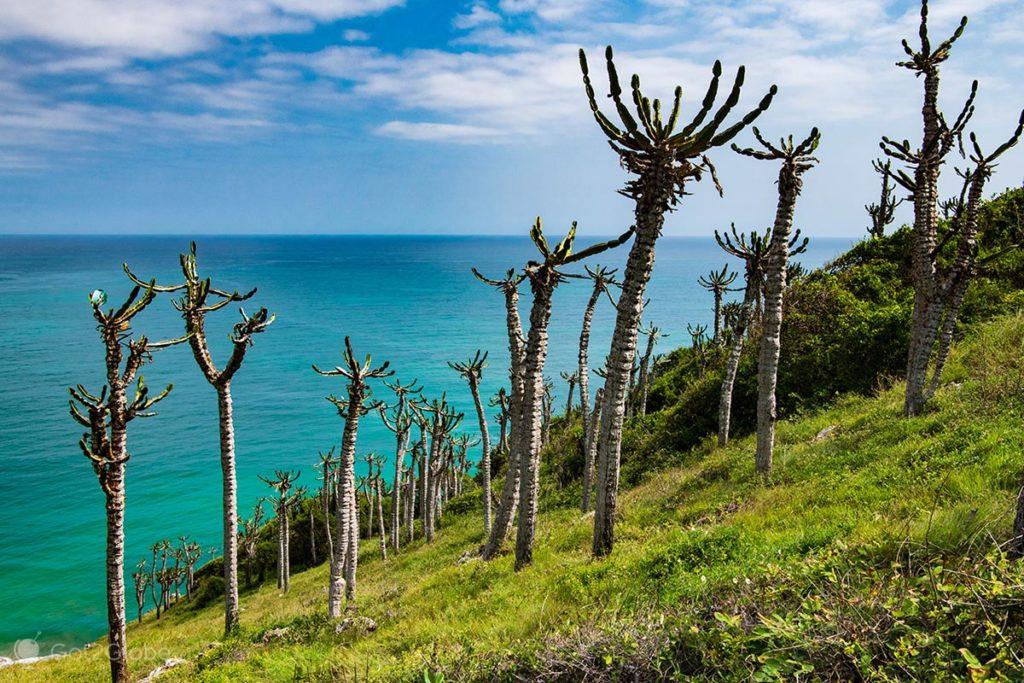
From the middle of this colony, we could see a few others based on solid rocks, almost reaching the fringe of golden sand.
Without warning, a massive bird of prey takes off from one of these conspicuous euphorbias abundant and endemic to Angola.
It flies around, worried about what we were doing there. Tighten the circles until we become restless.
We had enjoyed and photographed its territory countless times. It was time to give him back his moxixeiros and his peace of mind.
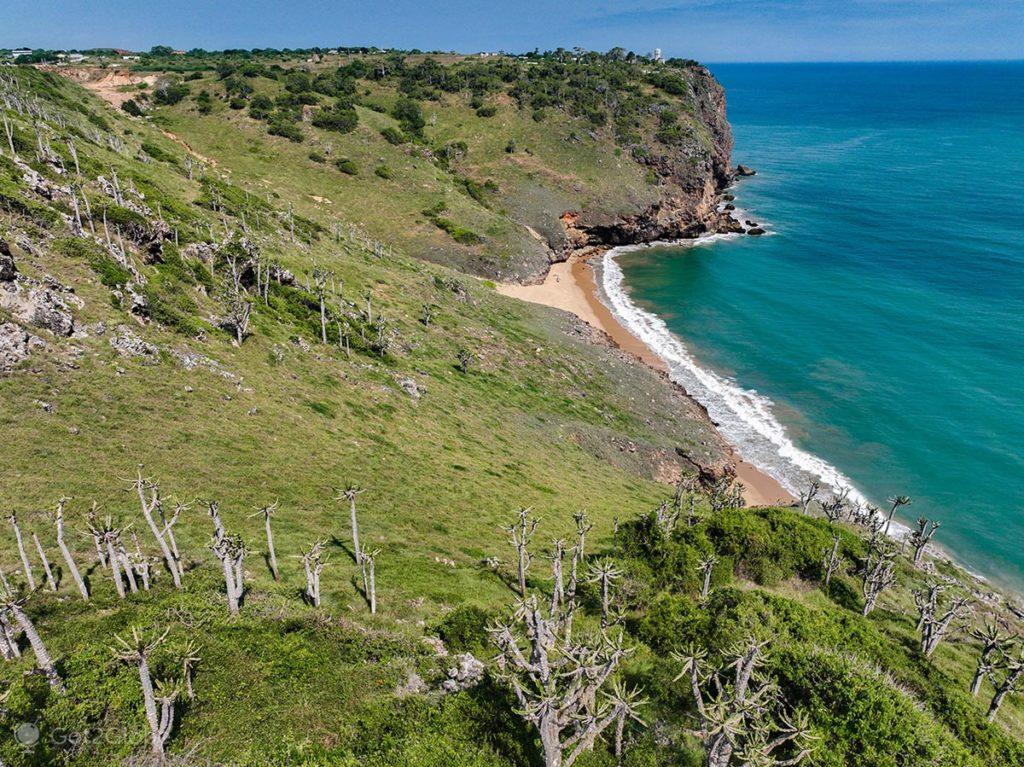
Discovering the Famous Surf Beach
We went down to Praia dos Surfistas.
This beach earned its name due to the influx of practitioners attracted by the long and consistent left waves that crash against the sand and musseque of the province of Bengo.
Other parts of the immense coastline, both to the north and south will have comparable waves.
Accessibility and infrastructure have made Cabo Ledo the most popular surf spot in Angola.
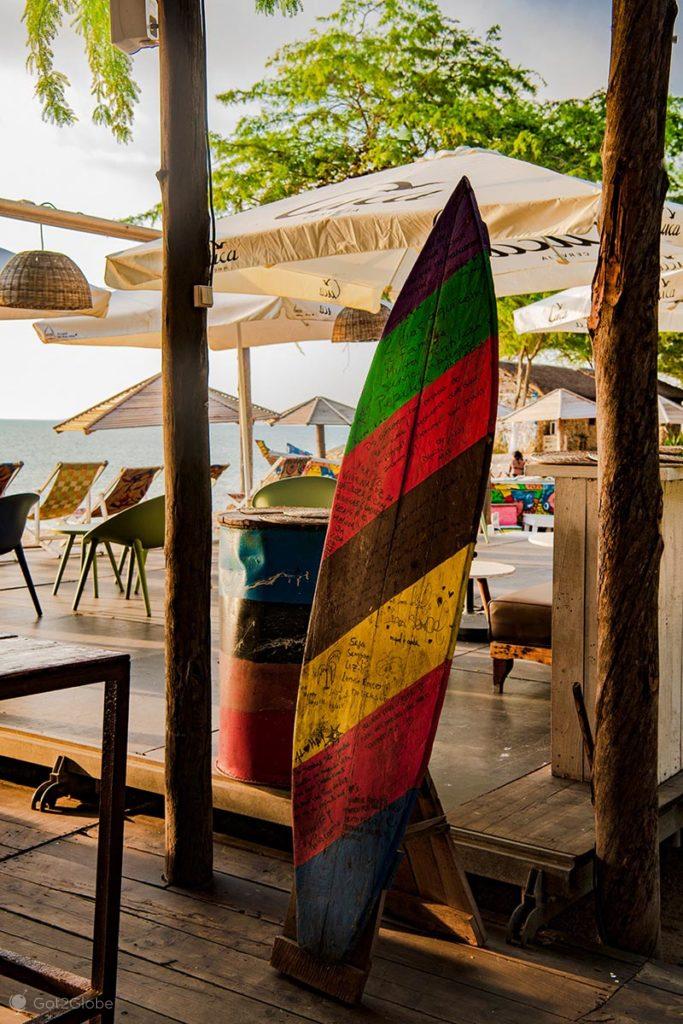
With the exception of some expected seasonal dysfunction that, as we got closer to the sea, became evident.
The prodigious left of Cabo Ledo arrives with the Cacimbo meteorology.
Now, at the end of May, the stormiest Cacimbo from June to mid-October was about to arrive.
On the other side of the dammed lagoon, on the sand that the low tide extended, there was an insignificant succession of waves that came to massage our feet and soothe our minds.
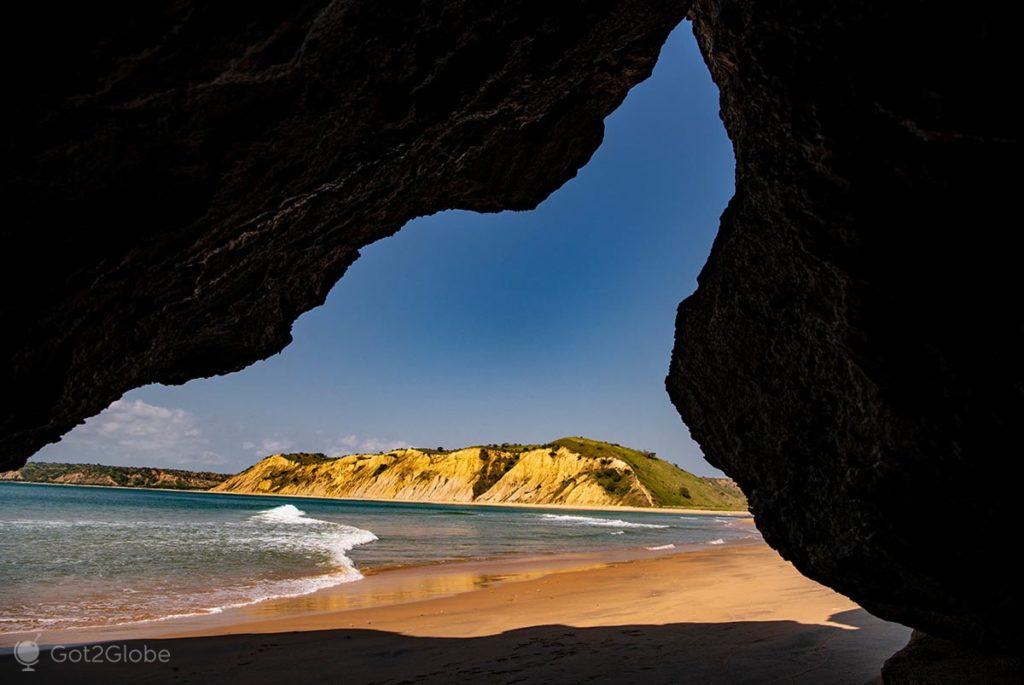
We were in the middle of the work week.
With the local bar closed, instead of the affluence and excitement coming from Luanda, there was a solitude and peace that we shared with a fisherman in the distance.
From there, the flatness of the ocean contrasted with the rude grandeur of the two rival slopes. Immediately, Cabo Ledo, showed us a bushy carpet full of spiky cacti.
Even though they were shorter, they competed in exuberance with the moxixeiros on the other side of the promontory.
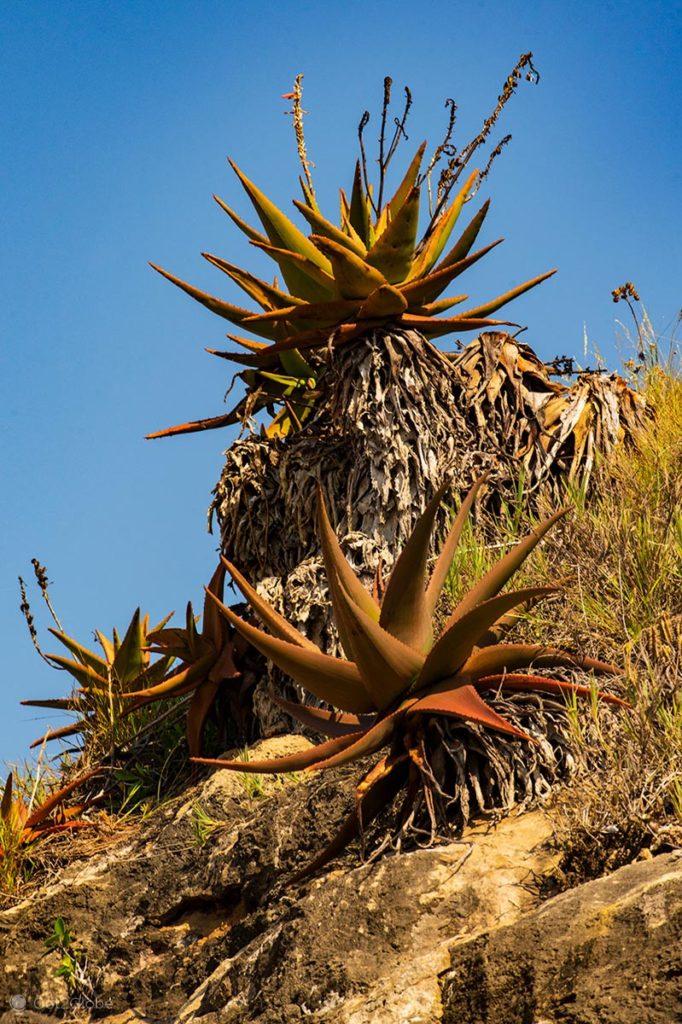
We said goodbye to the deserted Praia dos Surfistas.
Heading to the Fishing Village of Cabo Ledo
We reverse until the EN100 and the exit for the town of Cabo Ledo, in the middle of Angola.
A new sandy trail that zigzags between moxix trees takes us to a fishing neighborhood.
It stretched up the slope, partly overlooking the resorts that had occupied the seafront.
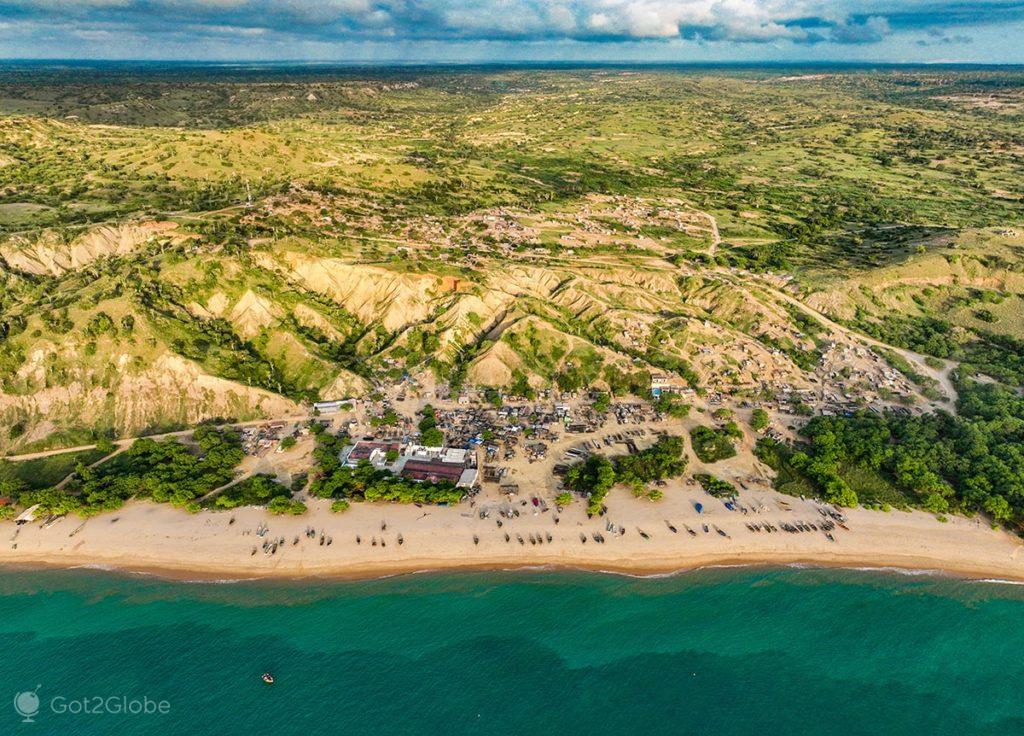
When we passed by, a young resident was mending a hammock stretched from a tree.
We stopped talking for a while. “no, this will take a while!” he reassures us, with a smile on his lips, resigned to such an intricate fate.
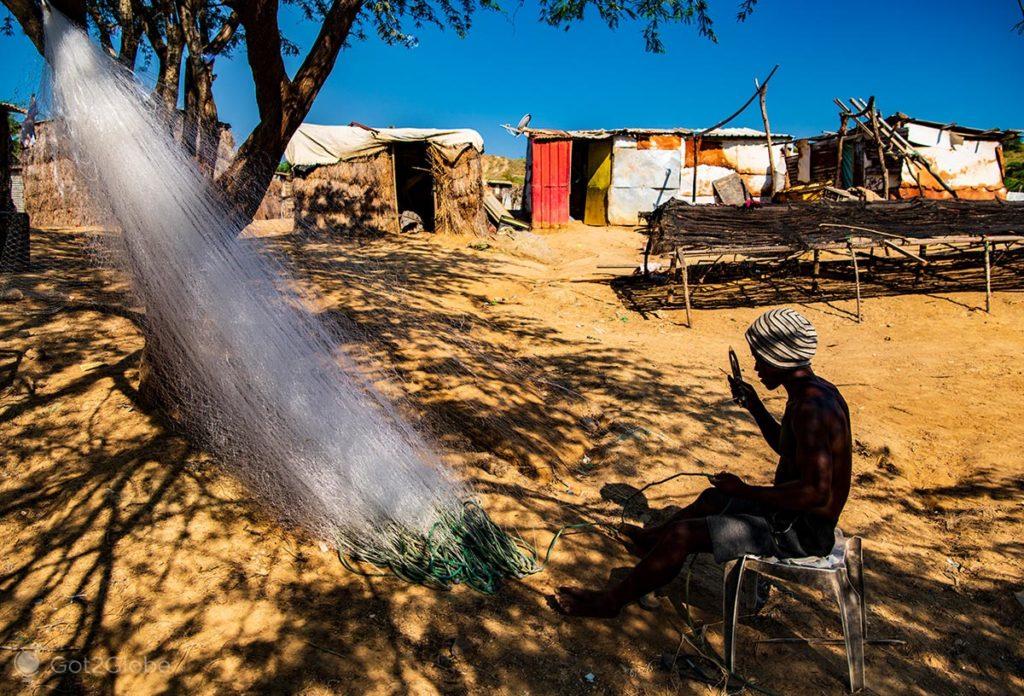
A little boy who appears from some houses above joins us, curious. Then another one. And others more.
Eventually, it's a veritable childish and chatty entourage that escorts us to the car.
The Providential Corner of “Queiroz Point”
We crossed the heart of Cabo Ledo. Already on the verge of steeper cliffs, we enter the “Queiroz Point” the unmissable bar-restaurant in Cabo Ledo, complemented by an accommodation area just a few meters from the sea.
Elsa and Paixão, the resident bartender, welcome us there. Not only.
That afternoon, he would also serve as the village's guide.
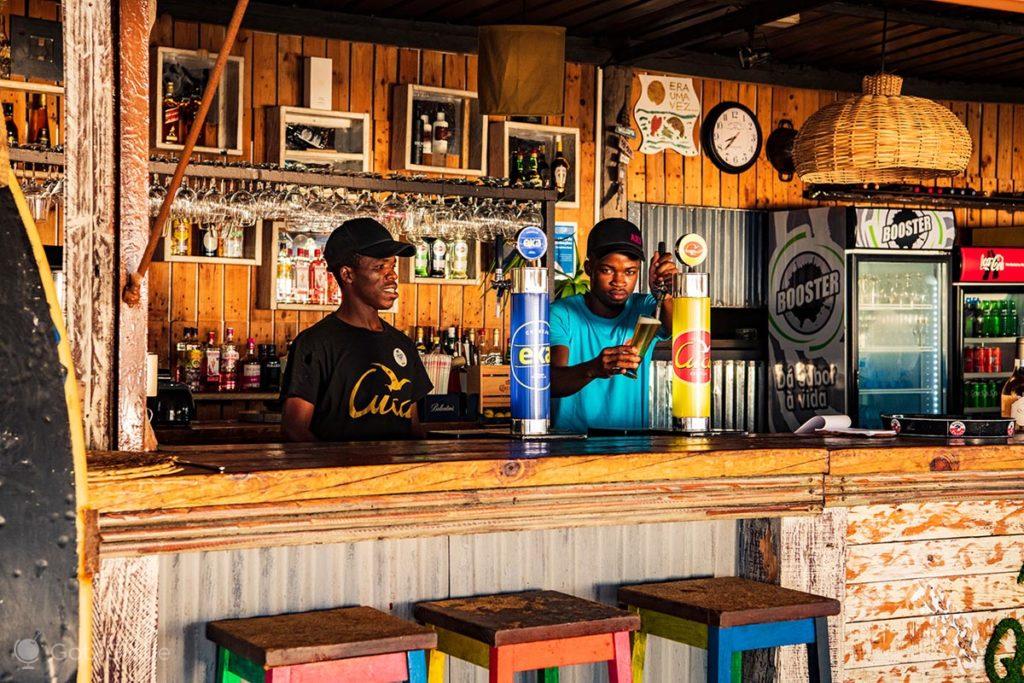
While we recognize the place and its views, Paixão serves us imperiales and some snacks.
We prepare to taste them when, on the beach in front, a commotion is created.
Fishermen Return from the Sea, Fish for Everyone
Three boats from the offshore fishing fleet were returning from the sea, their bottoms full of swarming fish.
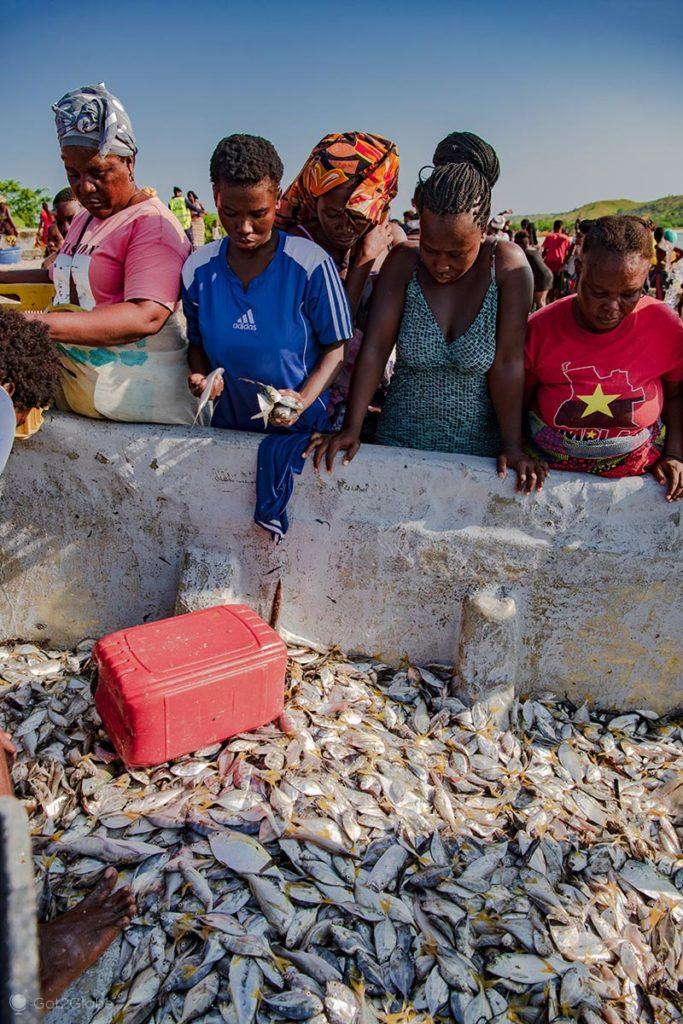
In no time, a crowd surrounds the boats, in a heated dispute for the best species and specimens.
Arguments were generated, in some cases, curbed by the incursion of waves that the wind, now stronger, caused to surge around the boats.
Voluntary and diplomatic, Paixão is responsible for quelling the protests generated by our photographic intrusion.
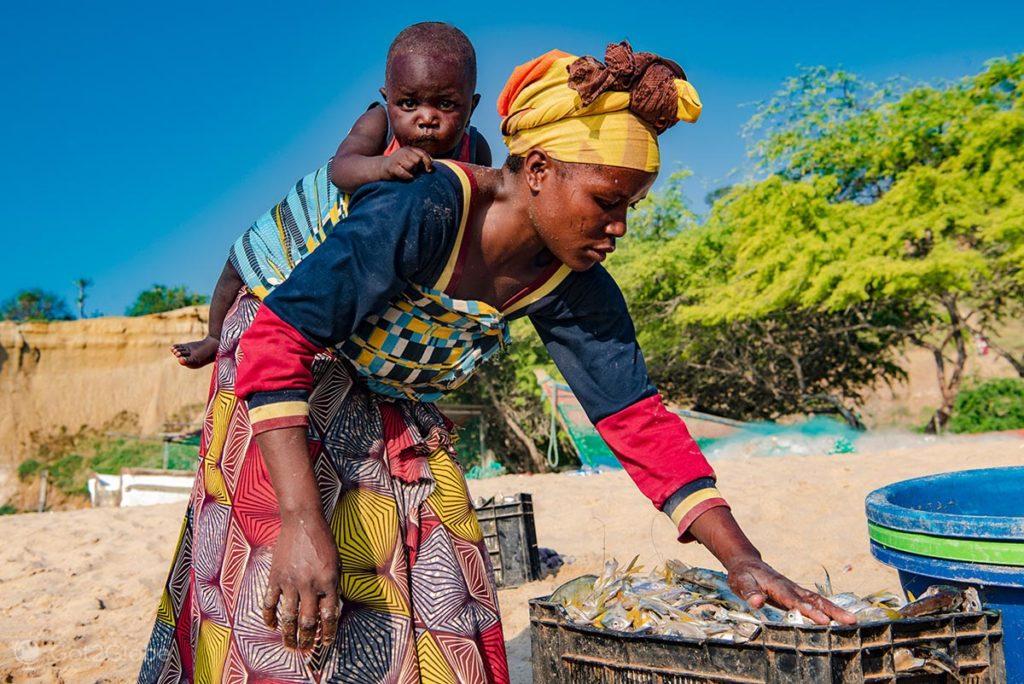
After almost two hours of work and arguments, little by little, almost all the fish had disappeared.
A line of women with bowls on their heads moves away towards Praia dos Surfistas.
Most buyers cross the local fish market back to their humble homes.
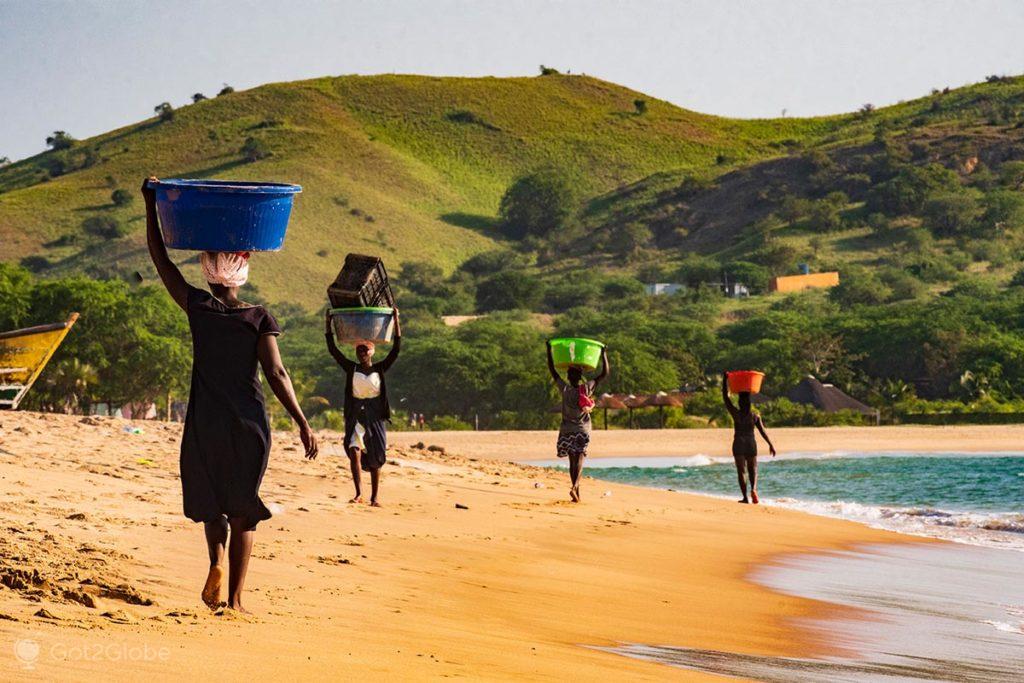
For a long time now, only fishermen's boats have dotted the emerald green ocean of Cabo Ledo Bay. It wasn't always like that.
Portugal's Passage through Cabo Ledo, in the Reconquest of the Kingdom of Congo
In 1622, Portugal was fighting what became known as the Luso-Congolese War. Determined to expel the Portuguese from Luanda and its surroundings, the kingdom of Congo allied itself with the Republic of the Seven United Provinces of the Países Baixos.
Supported by the resistance of the natives, the troops of the Dutch West India Company attacked Luanda and expelled the Portuguese.
Once diplomacy was confirmed to be unfeasible, the Portuguese authorities in Lisbon and Brazil agreed on the urgency of a reconquest expedition.
Francisco Souto Maior, future Captain General of Angola, commanded the fleet.
Souto Maior and several contingencies dictated the disembarkation in the wide cove of Cabo Ledo.
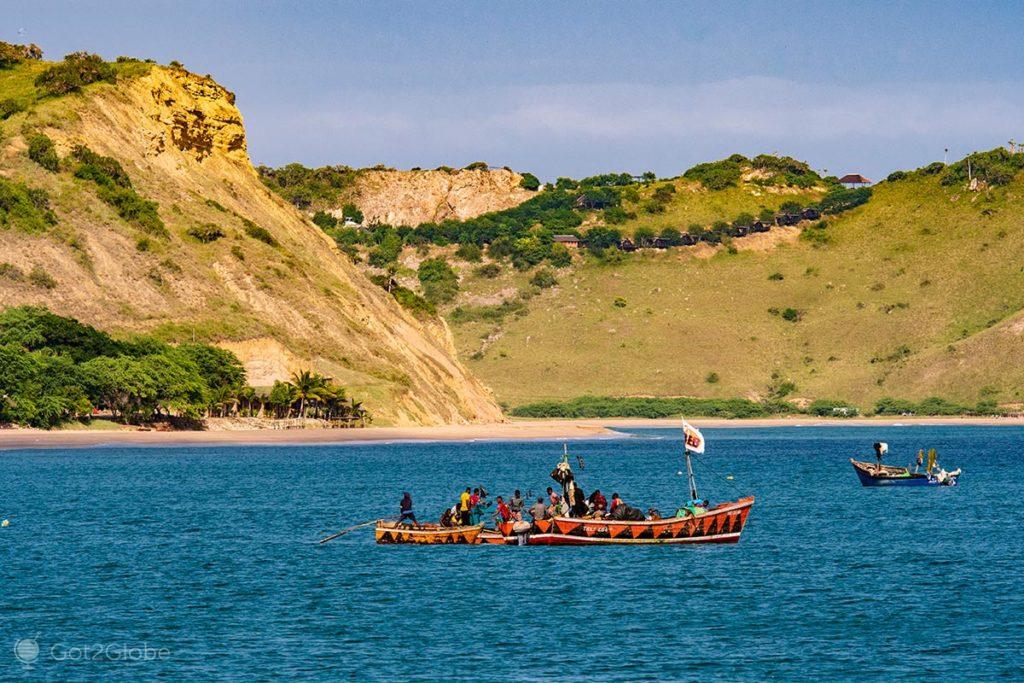
It is even said that the nomenclature of the town of Suto originates from its name. From there, Souto Maior's men sought to join those of Pedro César de Menezes, grouped in Massangano.
In order to defeat the forces of the Congolese queen Ginga and the Dutch, in May 1646, Souto Maior died.
Only two years later, the “boy” Salvador Correia de Sá, born in Cádiz, but tri-governor of the Captaincy of Rio de Janeiro and future governor of Angola (1648-51) guaranteed the expulsion of the Dutch from Luanda and their reintegration into the Portuguese Empire.
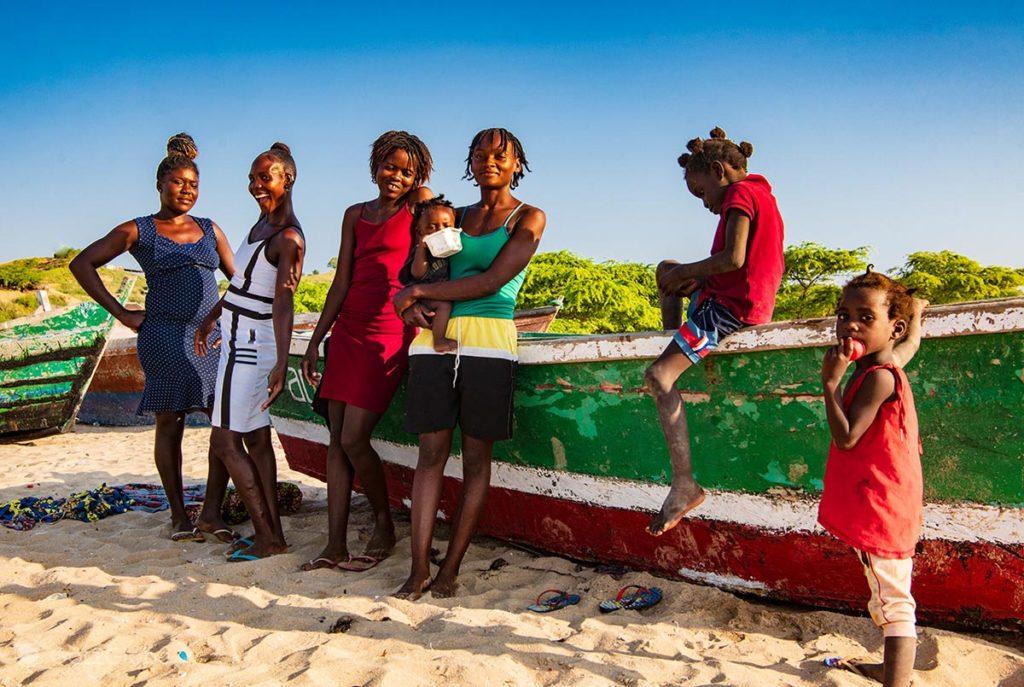
As far-fetched as it may seem, much of what we live and breathe in Cabo Ledo and Angola comes from this landing on those sands.
Starting with the brand of imperials and the gastronomic origin of the snacks with which, in the end, “Queiroz Point” rewarded us.
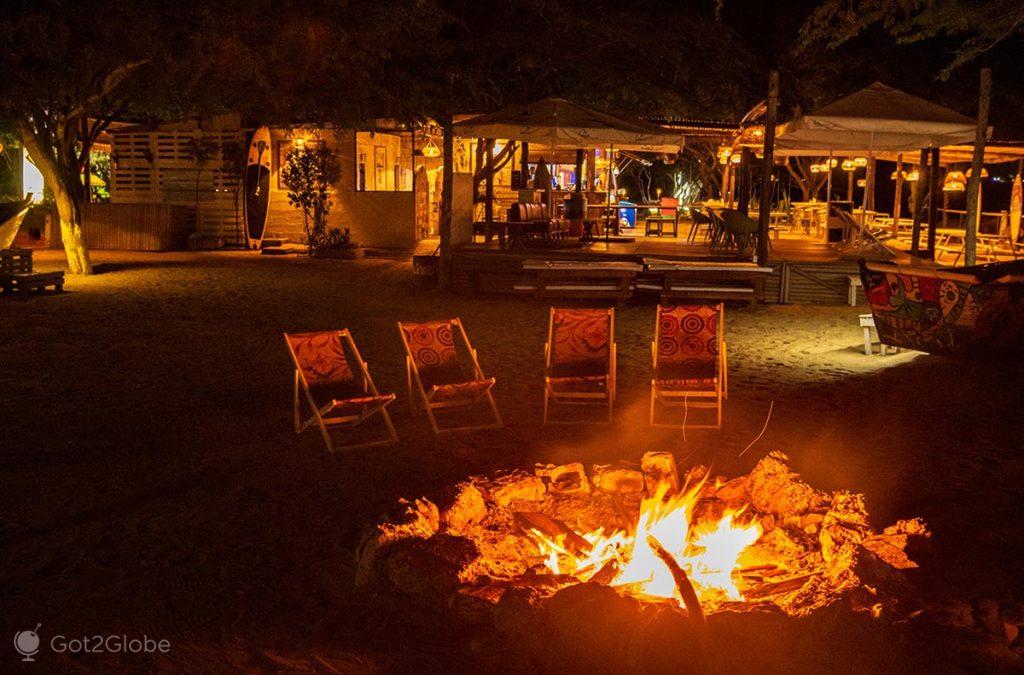
HOW TO GO
1 - Flight Lisbon – Luanda with TAAG: www.taag.com per from €750.
2 - Road trip Luanda – Cabo Ledo (2h, via EN 100)
3 - Book your travel program to Luanda, Cabo Ledo and other parts of Angola on Cosmos Angola – Travel and Tourism: phone/whats App +244 921 596 131
4 - Or, in Luanda, rent your car at rent-a-car eurostral:
www.Eurostral.com Tel./Fax: +244 222 444 666
Email: [email protected]




















